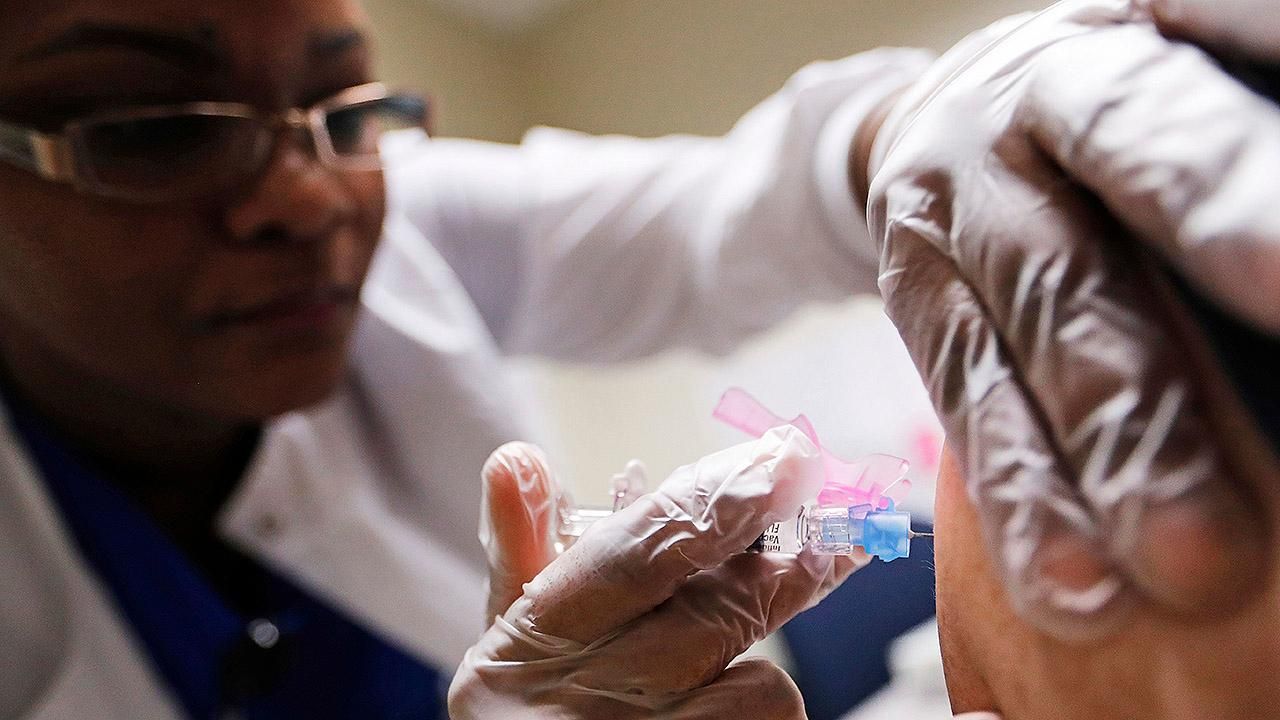[ad_1]
During last winter’s severe flu season, you may have found yourself worrying about whether you’d catch the notorious virus. But what if there was a way to predict whether you’d get the flu or whether you’d make it through the season scot-free?
Early research suggests that this may indeed be possible.
In a new study, researchers found a marker in people’s blood that could predict whether they’d likely catch the flu.
Specifically, the researchers found that people who got the flu had lower levels of immune cells called natural killer cells. If levels of these cells in the blood were above a certain threshold, people didn’t catch the flu.
PATIENTS BEING TESTED FOR HIV AFTER NURSE REUSED SYRINGES
What’s more, the researchers pinpointed a single gene, called KLRD1, that could serve as a proxy for a person’s levels of natural killer cells. KLRD1 is a gene for a receptor found on the surface of natural killer cells. Levels of KLRD1 expression in the blood before people were exposed to the flu could predict who would catch the virus 86 percent of the time, the study found.
“To our knowledge, [KLRD1 is] the first biomarker that shows susceptibility to influenza across multiple strains” of the flu, study senior author Purvesh Khatri, an associate professor of medicine and biomedical data science at Stanford University School of Medicine, said in a statement.
The findings suggest that natural killer cells with KLRD1 may be protective against the flu, although this is likely just one aspect of flu susceptibility, the researchers said.
However, the researchers noted that their results are preliminary and that more studies are needed to confirm the findings.
Flu predictor
For the study, the researchers analyzed blood samples that had been taken from 52 people who previously participated in so-called “flu challenge studies.” In these earlier studies, healthy — and brave — volunteers were exposed to the flu (either H1N1 or H3N2 varieties) and monitored to see if they got sick. Their blood samples were taken before the people were exposed to the flu.
The researchers used an algorithm to calculate the proportions of different types of immune cells that were present in people’s blood before they were exposed to the virus. That’s when the researchers discovered that levels of natural killer cells were low in people who ultimately got the flu.
If more than 10 percent of a person’s immune cells were made up of natural killer cells, they didn’t get sick; however, if their natural killer cells fell short of 10 percent, they caught the virus, the researchers said.
The researchers then homed in on KLRD1 as a gene that represented levels of natural killer cells and was predictive of flu susceptibility.
IDAHO CHILD RECOVERING FROM PLAGUE
The researchers said their findings might one day help doctors determine who is at highest risk for flu infection, and in turn, who might benefit most from drugs to treat flu, such as Tamiflu.
“If, for example, there’s a flu epidemic going on and Tamiflu supplies are limited, this data could help identify who should be prophylactically treated first,” Khatri said.
The findings might also have implications for the development of better flu vaccines, the researchers said.
“It will be crucial to understand the role of natural killer cells’ protection so that we can potentially leverage that in designing better flu vaccines,” Khatri said. “Since we see that natural killer cells are protective across different strains, maybe that would be a path to a universal flu vaccine.”
The study is published in the June 14 issue of the journal Genome Medicine.
Original article on Live Science.
[ad_2]
Source link

